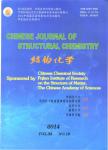Modulation of zeolite surface realizes dynamic copper species redispersion
作者机构:Interdisciplinary Institute of NMR and Molecular SciencesSchool of Chemistry and Chemical EngineeringThe State Key Laboratory of Refractories and MetallurgyWuhan University of Science and TechnologyWuhan430081PR China State Key Laboratory of Magnetic Resonance and Atomic and Molecular PhysicsInnovation Academy for Precision Measurement Science and TechnologyChinese Academy of SciencesWuhan430071PR China
出 版 物:《Chinese Journal of Structural Chemistry》 (结构化学(英文))
年 卷 期:2024年第43卷第6期
页 面:6-7页
核心收录:
学科分类:081705[工学-工业催化] 08[工学] 0817[工学-化学工程与技术]
基 金:supported by the National Key R&D Program of China(No.2022YFE0116000,2021 YFA1502600) the National Natural Science Foundation of China(No.21902180)
主 题:zeolite dispersion aldehydes
摘 要:Zeolite-based metal nanoparticles(NPs)catalysts have shown promising applications in fuel production,petro-and fine-chemical manufacture,biomass refinery,and so *** of hydroxyl groups on the zeolite surface has proven to be effective in boosting catalytic reactions over metal-zeolite *** example,modifying the wettability of ZSM-5 and titanium silicalite-1(TS-1)crystals by surface hydrophobization drastically enhances catalytic performance of zeolites encapsulated AuPd[1]and Pt[2]NPs in methane oxidation and aldehydes/ketones hydrogenation,*** fact,two kinds of hydroxyl groups are present in zeolite materials,which refers to bridged hydroxyls[Si-O(H)-Al]and silanols[Si-O(H)].Both hydroxyl groups are defects of zeolite framework structures,which provides anchor points in dispersing metals[3].The former hydroxyl group is tunable to control acidity by adjusting Si/Al ratio in zeolite,whereas the role of silanols is not fully understood[4],particularly in the dispersion of metal NPs.



